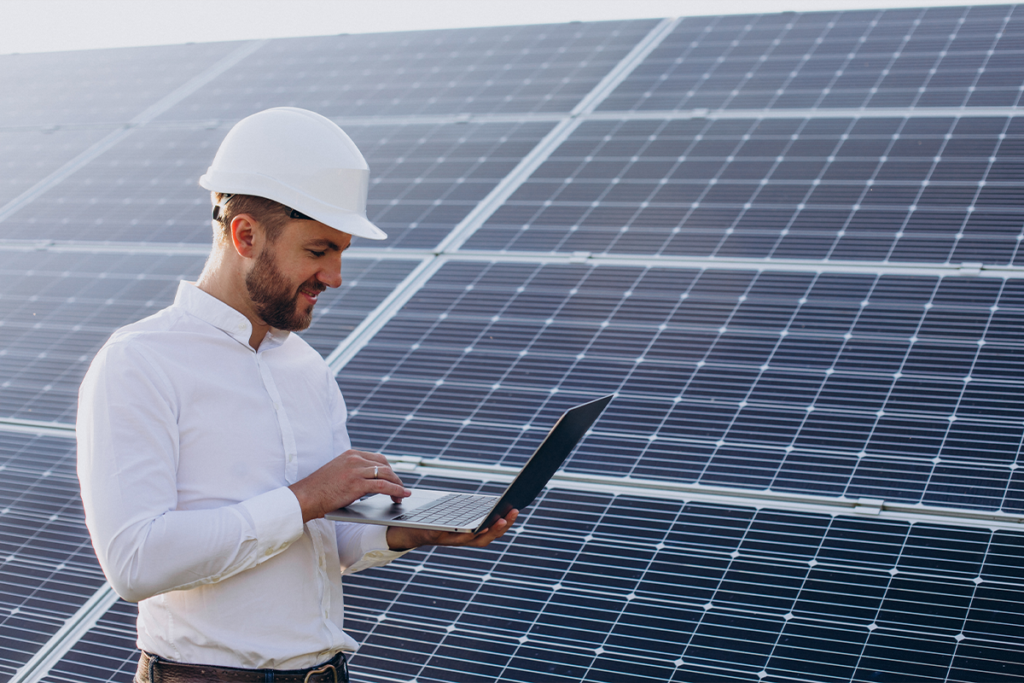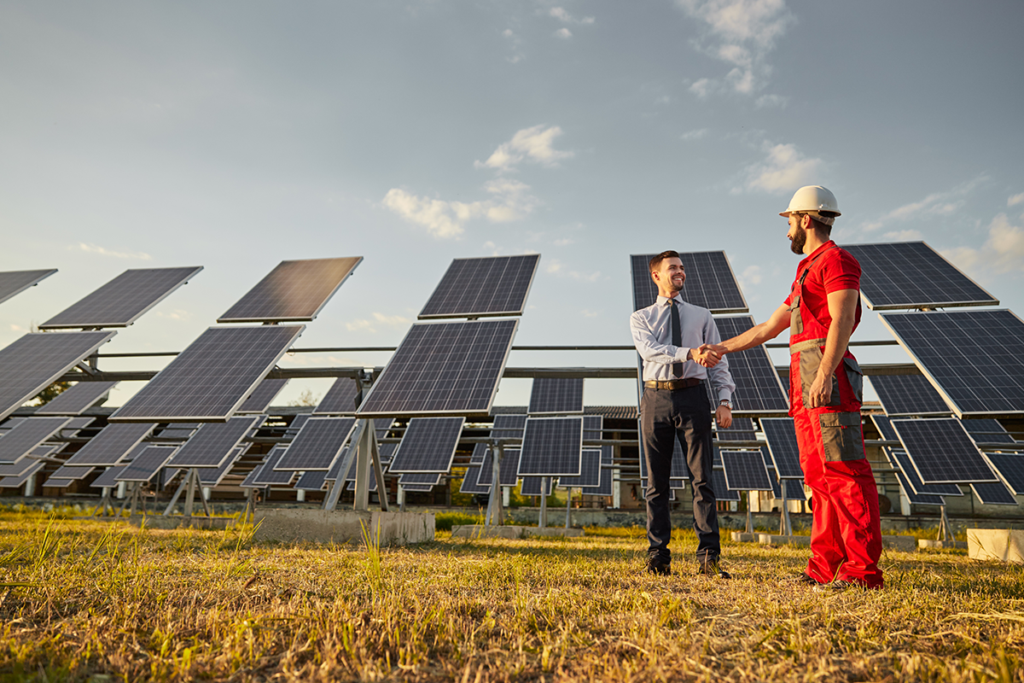You’ve probably heard A LOT about tariffs. You might even be sick and tired of reading about them. But let’s look at the big picture of one of the industries affected.
Proponents of tariffs often say that tariffs will bring industries, jobs, and manufacturing facilities back to the United States. This is called onshoring; it’s the opposite of offshoring. If you’ve scanned some of the recent headlines from solar industry magazines, you’d think that’s exactly what’s happening.
“New 100% American silicon solar panel supply chain announced”
“Talon PV can make TOPCon solar cells in US after licensing tech from First Solar”
“Stryten Energy to invest in American battery supply chain”
That’s all great news. But it’s not only because of the tariffs. So let’s take a closer look at the onshoring of the solar industry. But more importantly, we’ll learn how all these vague top-down economic policies ultimately affect you!
In this blog, you’ll learn:
- How solar panels are made
- How solar panels are manufactured in the U.S.
- How tariffs are affecting domestic solar manufacturing
- How the U.S. grew its solar industry
- How the Second Trump Administration’s economic policies will affect your residential solar project
- What you can do to help the changing world of renewable energy

How are solar panels made?
If you read our other article, Are These Perovskite Solar Cells The Future of Residential Solar, then you’ll remember how solar panels work.
The solar panels on your roof are most likely made up of monocrystalline silicon solar cells. These solar cells are comprised of thin layers of silicon crystals. These silicon layers have a bandgap equivalent to sunlight. So, when a photon hits the silicon, it causes electrons from its valence band to jump to the conduction band. Essentially, sunlight triggers the silicon to run a river of electrons, generating electricity.
Where do the raw materials for solar panels come from?
There are three major categories of raw materials. Silicon is at the core. Various metals create the frames and mounts. And glass tops the solar cells off for protection.
Silicon: China accounts for almost three-quarters of all global silicon production. That makes sense with their abundant raw material deposits. They have some of the world’s largest reserves of quality silicon. However, the United States is ramping up silicon production from quartz mineral mining, particularly in Arkansas, North Carolina, and California.
Metals: Solar panels often use aluminum as lightweight frames, steel for sturdy mounts, and silver for internal wiring. Domestically sourced steel and aluminum are becoming increasingly popular. Each solar panel only uses around 20 grams of silver, with only a few tiny milligrams going into each solar cell. Most of the world’s silver supply comes as a byproduct from mining other metals. However, some researchers are trying to recycle the silver from decommissioned solar panels.
Tempered Glass: You probably know that glass is just made from sand, but tempered glass is heat-treated to be four times stronger than normal glass. There are plenty of well-established glass suppliers in the United States.
What is the process for making solar panels?
First, the silicon needs to be purified into metallurgical grade silicon (MGS). Boron is added to silicon to enhance its conductivity. This creates a monocrystalline structure in the MGS ingots.
The ingots are cut with a powerful, high-precision saw to create paper-thin wafers. One side of the wafers is chemically treated with phosphorus, creating a negative charge. Now we have wafers with one side positively charged and the other side negatively charged.
At this point, this wafer could generate a current if exposed to sunlight. However, they are too shiny; they would reflect too much sunlight. So manufacturers add an anti-reflective coating so they absorb more sunlight.
Next, a wafer is wired up with silver conductors, creating a single solar cell. One solar panel needs around 60 to 72 solar cells wired together in a matrix.
Now you just need to sandwich that matrix between a plastic backsheet and tempered glass. Then seal it in an aluminum frame. And that’s how you make one monocrystalline silicon solar panel.

How are solar panels made in the United States?
Remember that headline: new 100% American silicon solar panel supply chain announced? It perfectly demonstrates how supply chains work.
“Corning will make silicon wafers in Michigan using polysilicon from nearby Hemlock Semiconductor, of which Corning is the majority owner. The wafers will be sent to Suniva in Georgia, where they will turn into cells. The cells will ship to Heliene’s assembly site in Minnesota to become fully formed solar panels.”
~ Kelly Pickerel, Editor in Chief of Solar Power World.
Oh, by the way, Solar Power World recognizes us as one of the best solar companies in Virginia. According to their 2024 rankings, we ranked 33rd nationwide!
Hemlock Semiconductor is a major electronics manufacturer and appears to be sourcing most of its silicon from the United States. However, they had the resources to do that easily.
Qcells is another domestic manufacturer planning on opening a factory in Georgia in 2026. However, its previous supplier, REC Silicon, which was in the USA, closed down. So they are now sourcing polysilicon from OCI in South Korea.
So, most of the solar panel supply chain can be onshored, but major sources of raw materials, especially silicon, are still offshored.
Are tariffs onshoring electronic manufacturing?
Yes and no. Tariffs are just one aspect of this renewable energy ecosystem.
Think back to social studies class when you learned about subsidies and taxes. They can act as carrots and sticks— rewards and punishments. For example, Virginia has a cigarette tax to discourage people from smoking.
The federal government has the Federal Crop Insurance Program. It protects farmers by providing insurance payouts for crop losses due to natural disasters, pests, or diseases. They want to encourage domestic farming. Without it, farmers would lose their entire year’s earnings because of something outside of their control. Our agricultural industry would crumble without this subsidy.
How have U.S.-China trade tensions changed the renewable energy industry?
Ironically, the renewable energy industry of the early 2000s contributed to those trade tensions. During the Obama presidency, China subsidized solar cells and modules. Because they were subsidized, Chinese manufacturers could sell them for less than it cost to produce them. This is sometimes called “dumping.” The goal was to dominate this emerging industry by being the most affordable in the market.
The Obama administration attempted to counteract these subsidized exports with tariffs. This is called “protectionism.” Protectionist policies aim to improve domestic industries and stimulate a country’s economy, often at the expense of international trade.
The first Trump administration introduced 30% tariffs on imported solar cells and modules. The Biden administration expanded these tariffs to several countries in Southeast Asia. The administration believed Chinese manufacturers were circumventing their tariffs by exporting them through other countries.
Today, in the second Trump Administration, there is a foreign policy focus on imposing sweeping tariffs. By the time you read this, things might be very different from how they were in April of 2025. However, the administration has been very consistent with imposing steep tariffs on Chinese manufacturing.
Tariffs are sticks. While they discouraged Chinese imports, they did not encourage domestic production. For you, the homeowner who wants clean energy, they mainly increased your installation costs.

How did the U.S.A. grow its solar energy industry?
The United States grew its domestic solar industry through incentives.
If you’re researching going solar, then you’ve probably heard of the 30% Federal Solar Tax Credit. Basically, if you go solar, the federal government will reduce the amount of taxes you owe by 30% of the total cost. We explain it in further detail in our blog: 5 Common Solar Myths, Misconceptions, and Misunderstandings You Should Know.
The Federal Tax Credit is an indirect subsidy targeting you, the end user. However, the Inflation Reduction Act (IRA) of 2022 included numerous incentives and investments for domestic manufacturing and utility-scale solar.
By 2024, the IRA grew U.S. solar manufacturing fourfold! That means our domestic solar manufacturing capacity in 2024 was four times bigger than what it was in 2022. The United States installed record-breaking amounts of solar systems!
That’s great news for our communities, our economy, and our world.
And these Biden-era incentives are still working!
For example, Joe Biden signed the Infrastructure Investment and Jobs Act of 2021. It includes a provision called Build America Buy America (BABA). It basically says if you are a company that wants to be contracted by the U.S. government for infrastructure projects, you need to be domestic. A certain amount of your product has to be manufactured here in the US.
SolarEdge creates inverters and power optimizers, vital components for solar systems. This year, they celebrated becoming BABA compliant. That may not sound like a big deal, but it enables them to work for a very lucrative client, the U.S. government.
“By manufacturing these advanced systems domestically and achieving BABA compliance, our C&I inverter solution in particular will be able to promote the deployment of premium U.S. solar technology across federal infrastructure projects, supporting American jobs and innovation,”
~ John Carroll, VP at SolarEdge.
How will these economic policies affect your residential solar project?
Needless to say, economic policies are very complicated, but they affect every aspect of our lives. So, how will the Second Trump Administration’s economic policies affect your residential solar project?
You’ve probably already seen how tariffs have caused confusion, supply chain disruptions, and delays. According to PV magazine, we’re going to face higher upfront prices for residential solar installations.
However, many of our past clients have said that solar actually protects them from increasing prices. Remember, Solar is an investment that will provide savings over the next 30 years. Read how one residential solar project will save homeowner Glen Goodman a staggering $104,924 over its lifetime.

What can I do to help renewable energy?
First off, you can directly support renewable energy and our planet by going solar. Solar isn’t just for homeowners. As one of the top solar companies in Virginia Beach, we can install commercial solar for your place of business. We can even support farmers with agricultural solar.
Solar is pricy, but it is an investment. That’s why we offer you various financing methods to fit your budget.
If you can’t afford solar on your own, try going solar as a community. Imagine uniting your neighborhood as a green oasis— as a solar co-op.
The world’s changing. Let’s build a brighter future with solar energy!
To start your solar journey, start with a site assessment. Schedule a time with us on your terms.
